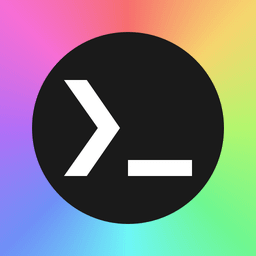Imagine if god showed up one day and said: “It’s actually Jod” then left
- 7 Posts
- 194 Comments
I was unfamiliar with the decorate flag, but I can’t see any difference after trying.
I will say this is one command I absolutely refuse to create an alias for.
I have force committed to memory the command:
git log --graph --remotes --all(and the variation with the--onelineflag appended to the end if needed) so I can use it anywhere.It’s the one command I can’t live without.
Try this link on an iPhone: https://jpegxl.info/resources/jpeg-xl-test-page.html
The future is
webpJPEG XL…And telling software patents to burn in hell.
It’s not AI slop, and we shouldn’t need to discuss it.
But unfortunately some users’ behaviour is destructive, so we have to discuss it.

 12·10 天前
12·10 天前There’s some really good recommendations in here, but we can’t settle on what to recommend for you without a little more info.
- Are you planning to game on it? (as in computer game, not ttrpg)
- If yes, use Bazzite. (it’s already set up for gaming, and it’s “immutable” which means that it’ll be hard for you to break)
- If not, what experience do you prefer more:
- Windows 7
- Use Linux Mint (Cinnamon Edition)
- Windows 10 (but without all the cortana, and bing stuff)
- Use PopOS
- I want something Windows like, but I want more control over how I can customise it
- Use Kubuntu
- I want something Windows like, and I want more control to customise it, but I also don’t want it to break if I start doing weird things to it
- Use Kionite (Will look the same as Kubuntu from the outside, but will lock you out from doing or using certain things)
- Windows 7
Which one should you pick?
The answer is No (and also yes).
Huh?!
The real answer is not to pick one, but to pick more than one. You can (one at a time) install each of them onto a USB then change your computer’s settings to boot up from the USB instead of windows. That way you can try each one to see what you like without installing them on your computer first.
For each one you try, you can check:
- Do I like the interface?
- Are there any compatibility issues? (wifi issues, sound issues, graphics issues, etc…)
- Am I happy with how long the battery lasts?
- etc…
Then once you’re ready, you can install the one you want to use onto your laptop.
- Are you planning to game on it? (as in computer game, not ttrpg)

 31·10 天前
31·10 天前Debian and KDE would make a solid experience, but that’s not what this user is looking for.
They’re not going to know what Debian or KDE are, and they’re not going to have the requisite knowledge to know that you’re probably recommending Kubuntu.
Kubuntu is a great choice, but since we don’t have all the information on the user’s needs, it might not be the best choice.
I set
ltols -hal

 2·10 天前
2·10 天前A quick and dirty heuristic to find out is to walk through any central transport station or food court and check:
How many people have customised their phone’s lock screen?

 5·14 天前
5·14 天前That’s a fairly useless point to make since everyone will always want to look at what configurable options can be adjusted.
No one would buy a car if they couldn’t adjust the seat or mirrors.

 21·23 天前
21·23 天前It wouldn’t, a simple finite state machine that any intelligent entity could emulate would be enough.
But people have completely deluded themselves into thinking that (what CEOs and marketers call) “AI” is actually intelligent, and this case study shows how preposterous that fantasy actually is.
unrelated, but I love your profile’s display pic haha
I like the colors, but the sizes of things are pretty inconsistent

 2·1 个月前
2·1 个月前They told you to use “ed”
You missed the joke

 31·1 个月前
31·1 个月前I really want to switch from VSCode to Helix but not having a file tree is a deal breaker.
Luckily there’s been a lot of work on adding a plugin runtime with one of the proof-of-concept plugins being a file tree. Assuming the plugin runtime comes out this year in a helix release, and adding on a year for the community to settle on the first wave of plugins while giving them time to mature, I can see myself using helix fulltime in 2027 (before Microsoft has enshitified vscode enough to be unpleasant to use).
For a complicated project I get it, github’s PR system is kind of bad (horrible branch based workflow and no stacked diff support resulting in increased churn) compared to the alternatives.
That’s why we have tools like Graphite to add stacked diff support on top of github, and other devs creating new VCSs because git still hasn’t made it’s interactive rebase and merge conflicts easy enough to handle for juniors and it should be simpler.
I don’t have the time for a proper reply but just a heads-up about WSL2:
You can set up a dev drive to get around any IO issues by mounting a real storage drive directly into WSL2.
No one is entitled to anything from open-source projects.
I never said anything contrary to this.
but Mac/mac (what is it now?) without hardware or VMware wasn’t fun
Letting MacOS users support MacOS hardware is generally easy when you already have BSD and/or busybox support already.
Windows support should always be seen as charity, not an obligation, for all [open source] projects where it’s not the primary target platform.
Ordinarily I’d agree, except these are GUI Libraries.
The whole point of them is to be a generic interface that prevents you from needing to use the platform specific APIs directly.
If GUI libraries aren’t going to target the most widely used platforms, then why wouldn’t the developer just use the platform specific APIs directly?
Windows XP completely sucked until SP2
The service packs were mainly minor bug fixes, security changes, and support for new hardware. Besides a handful of new settings pages, almost none of the changes were noticed by users.
Also, of the whole windows XP era, SP2 is the one that most users experienced and remember.
, and then it was only “good” because it sucked less than what came before.
Windows XP came after both 2000 and ME. 2000 only focused on businesses and they loved it, and ME only lasted 2 weeks and was recalled, so almost no one had to deal with it. XP came after both good and bad versions of windows and was generally loved.
Windows 7 was only “good” because they undid the worst of the changes in Vista
Actually 7 was good because it continued the changes. Vista was half baked and rushed out due to the failure of the longhorn project. The user facing problems of vista fit into two buckets:
- New hardware driver model
- Poor optimisation
The new driver model wasn’t given to hardware teams early enough so almost no hardware worked out of the box with Vista. And the hardware that did, often had stability issues because there wasn’t enough time to test the drivers that they launched with.
Windows 7 used the exact same hardware driver model as Vista. People often thought changes were made to Windows but no, it just the fact that the hardware folks had enough time to sort out their own drivers and test them.
The poor optimisation was a Vista problem however. Vista was pushed out the door generally feature complete, but the devs didn’t have enough time to optimise Vista’s processes. Windows 7’s internals were mostly the same as Vista’s, except that the features were already there, so the devs could just focus on the already existing software.
and 8 sucked more.
8 actually continued the optimisations from 7, but the replaced UI was definitely a major screw up.
The same is largely true of 10, it’s only “good” because it’s less bad than 8.
10 actually continued the optimisations from 8, and the new UI resembling 7’s was a welcome change.
Funnily enough, 11 actually continued some optimisations from 10, but you would never know because there’s so much bloated adware inside it. That’s why people like the “fixed” versions of Windows 11, like the regular version after running open source fix of choice (Win11Debloat, tronscript, etc…), the open source debloated installs (like Tiny11), or the official debloated/debloatable installs (Windows 11 IoT LTSC, Windows 11 Enterprise).
Windows 11 is optimised enough that a bunch of devs enjoy sticking it on ever underpowered and unsupported hardware. Someone ported it back to a 9 year old smartphone (32-bit arm), and recently someone got it running on a smartwatch. Technically, you could run an app in a containerised Windows 11 install on a server and have it take up 290mb storage but I wouldn’t call that a typical windows 11 user experience.
I actively like my hybrid CLI + GUI workflow, and Windows offers a terrible CLI experience.
Windows used to offer a terrible CLI experience.
Now it comes with Windows Terminal and either powershell for a powerful non-posix shell, and WSL2 for whatever posix shell you want (and wslg for launching linux gui apps from said shells).







It’s not about caring, it’s about the lawyers making the argument javascript’s genericness easier